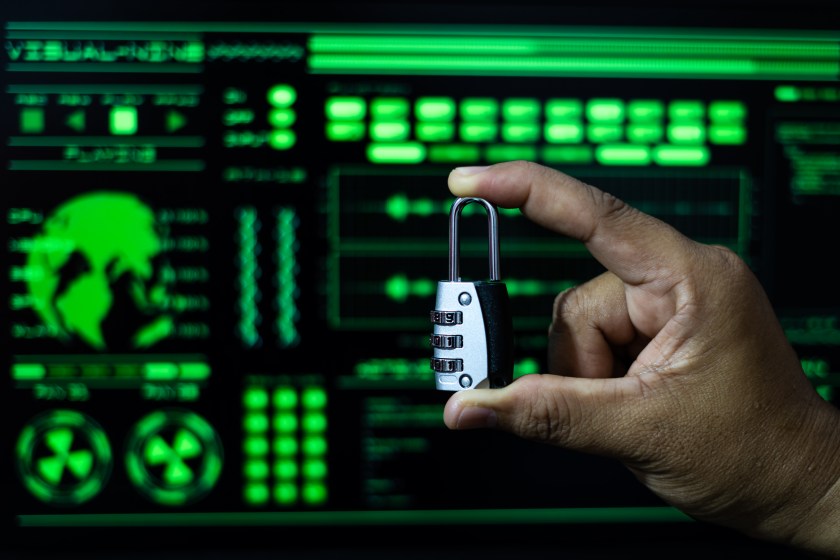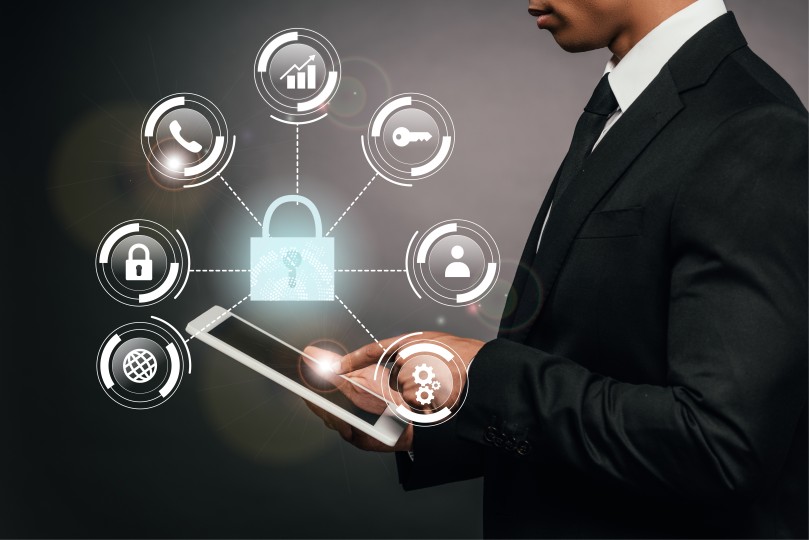For almost every business that exists online, cybersecurity is not an option—it is a necessity. Cyber threats are growing exponentially, and we have seen that companies of any size can become potential victims. Cybersecurity is not only putting the right technologies in place to protect your business from cyber threats but it must be a holistic effort through people, processes, and technologies.
This article walks you through some critical steps a business must take toward ensuring information safety.
What’s Cybersecurity?
Cybersecurity is preventing damage to, unauthorized use of, disruption of, modification of, or access to computer systems, electronic information, and networks. In that regard, cyber-attacks are generally designed to access, steal, delete, alter the sensitive information of an individual or organization so that the attackers can extort money from the victims or damage critical business processes. Implementing effective cybersecurity measures is particularly challenging today because there are more devices than people, and attackers are becoming more innovative.
Importance of Cybersecurity
The importance of cybersecurity can never be overemphasized; it’s a must for every business to achieve sustainable growth. For starters, businesses hold a lot of sensitive information, starting from the people’s personal information to the financial data of the employees and clients, and the assets. Cybersecurity does a brilliant job of protecting such data from potential breaches and unauthorized access.
One data breach is all it takes for a corporation’s reputation to receive considerable harm. Clients trust enterprises for the safety of their information, and this breach causes them to lose their trust and, subsequently, business. Let’s also not forget that cyber-attacks have a way of being extremely costly. Businesses can directly lose money from the act through the theft of funds or when a ransom is paid. Indirect costs include outages, recovery, and rebuilding the trust of customers. This is again where cybersecurity is extremely important.
Lastly, most sectors work under strict regulations and guidelines. Failing to comply with these regulations can invite a massive penalty along with possible legal action that does irreversible damage.
Key Steps for the Security of Information
1. Conduct Risk Assessment
Before you can protect your business, you first need to understand which specific risks you will face. In essence, risk assessment refers to the identification of some valuable assets with associated potential threats and vulnerabilities that such threats can exploit. This will help specify and hence prioritize your general cybersecurity efforts, based on where you stand most exposed and vulnerable.
2. Create a Cybersecurity Policy
A cybersecurity policy describes how your business will protect its information assets and sets a certified standard for all employees’ behavior. Areas that such a policy should address include password management, data encryption, email security, and acceptable use of company devices and networks. Your employees should clearly understand what is expected while abiding by your policy, which should be clear and well-communicated.
3. Establish Strong Access Controls
Access control lies at the core in cybersecurity. So, implement rigid access management by ensuring that sensitive information gets to authorized personnel only. This includes-
RBAC: In Role-Based Access Control, permission to data access is granted based on an employee’s role in an organization.
MFA: Multi-Factor Authentication employs two or more ‘factors’ to verify the identity of an entrant subject attempting to gain access to a given system.
Least Privilege Principle: Do not give access to an employee more than they need to get their job done.
Ready to take your cybersecurity to the next level?
Contact Growth Hackers
4. Keep Systems Up-to-Date and Patch
Loopholes that are usually present in the software are used by cyber attackers to gain access to enterprise resources. Improve your defense against these types of threats by keeping your software, operating systems, and applications updated and regularly patched. Outdated software can leave your systems vulnerable to a virus or malware on your system, so it’s essential to implement updates as soon as they are available. Make sure to install all updates in time. It might be helpful to use an automated patch-management tool for process efficiency.
5. Encrypt Sensitive Data
This process or technique involves changing data such that it can never be readable without an authorized key or decryption procedure that analyzes it. The sensitive data must be encrypted both at rest (when it is stored) and in transit (when it is being transmitted over networks). This means that even if your data is intercepted in your network by somebody else who is unauthorized, it can’t be read without a decryption key.
6. Train Staff
Human errors could be one of the biggest reasons for cybersecurity breaches. Thus, your employees should be educated on the significance of cybersecurity and work toward the goal through the training of employees. You must prioritize regular training sessions ensuring that employees can identify phishing emails, formulate strong passwords, and maintain safe web browsing practices. Instilling security awareness can significantly help minimize risks arising from human error causing a breach.
7. Install Firewalls and Antivirus Programs
Firewalls and antivirus software are essential tools for protecting your network from malicious attacks including ransomware attacks. These programs are specially designed to keep a close watch on incoming and outgoing network traffic to block unauthorized access. In addition, antivirus programs can easily detect and remove malware before any harm takes place. Make sure that these tools are installed on all your organization’s devices and are updated with the latest virus definitions, continuously protecting the user from new threats.
8. Backup Data Regularly
Proper backup of all critical data will go a long way toward getting business back up following an attack. Ensure that your data backups — performed with the utmost care — are done regularly and are properly stored, with at least one copy kept off site or in the cloud. Test your backup and recovery process regularly so you can quickly restore data in case it gets lost or there is a breach of your systems.
9. Data Masking Implementation
Data masking involves replacing accurate data with fictional but realistic data to secure that information. Data masking is needed in securing non-production environments like testing and development where actual exposure to data is not necessary.
By masking data, you ensure that sensitive information is not exposed to unauthorized users or environments. Most regulatory frameworks, such as GDPR and HIPAA, have requirements for the protection of sensitive data. Data masking aids in compliance with such requirements.
10. Monitor Network Traffic
Continuous monitoring of network traffic can help detect suspicious activities early. There are intrusion detection systems (IDS) and intrusion prevention systems (IPS), which are very effective in setting up monitors for abnormal patterns or behaviors to indicate signs of cyberattacks. A protocol should further be set in place to respond to the alerts so that mitigation is swift in any potential threats.
Many security teams are now implementing sigma rules—YAML-written textual signatures designed to identify suspicious activity in log events—to standardize and automate detection across various security information and event management (SIEM) systems, significantly reducing false positives and accelerating response times.
11. Develop an Incident Response Plan
Despite your best efforts, a cyberattack may still occur. An incident response program ensures the business takes prompt action to respond and reduce the level of damage. This plan will make it easy to spell out the steps to take in case of a breach, whom to call, how to contain the breach and the recovery of data and systems. Regularly review your incident response plan since updates triggered by new threats and vulnerabilities can be insightful. Additionally, site reliability engineering can help ensure your systems are built to handle such incidents more efficiently.
12. Secure Remote Work
With the rise of remote work, securing remote access to company systems has become more critical than ever. The remote workers must be able to connect securely to your organizations with the aid of Virtual Private Networks (VPNs) as they gain entry to the resources of organizations. Put tight controls on the access to systems and databases; make sure the devices used by the workers are updated with the most up-to-date security software as applicable.
Secure your business with top-notch cybersecurity today!
13. Engage in Threat Intelligence
Months of keeping track of current cyber threats and trends give you the ability to work ahead to guard risks against potential attacks. Subscribe to cybersecurity newsletters, collaborate in industry forums, and otherwise network with other businesses and professionals also in the field of cybersecurity. Sharing information about threats can help you stay one step ahead of cybercriminals.
14. Third-Party Due Diligence
Vendors providing services to businesses can also pose a cyber threat. Make sure that the cybersecurity practices of third-party vendors are assessed and meet your security standards. Establish clear contractual obligations regarding data protection and incident response.
15. Build a Security-First Culture
The establishment of a security culture is essential for the long-term security of your business. Leadership should set the tone by emphasizing the importance of cybersecurity and leading by example. Employees must be encouraged to report suspicious activities and rewarded if they abide by the security policies and best practices.
16. Conduct Monitoring and Penetration Tests Periodically
Regular penetration testing and monitoring are essential components of a robust cybersecurity strategy. But, what is the meaning of penetration testing? Penetration testing refers to simulated cyberattacks designed to identify vulnerabilities in a system and helps businesses understand potential weaknesses before they can be exploited. By continuously monitoring networks and conducting routine tests, organizations can proactively identify threats, ensure their defenses are up to date, and reduce the risk of a successful cyberattack. This ongoing process is crucial for staying ahead of evolving security threats.
Final Works on Cybersecurity 101
Ensuring information safety in your business requires a multifaceted approach that involves technology, processes, and people. By implementing the key steps outlined above, you can significantly reduce the risk of cyberattacks and protect your valuable data. Stay vigilant, stay proactive!
GrowthHackers provides top-notch growth hacking services helping businesses from all over the world grow. There is no fluff with Growth Hackers. We help entrepreneurs and business owners enhance their cybersecurity defenses, increase their productivity, generate qualified leads, optimize their conversion rate, gather and analyze data analytics, acquire and retain users and increase sales. We go further than brand awareness and exposure. We make sure that the strategies we implement move the needle so your business grow, strive and succeed. If you too want your business to reach new heights, contact GrowthHackers today so we can discuss about your brand and create a custom growth plan for you. You’re just one click away to skyrocket your business.








